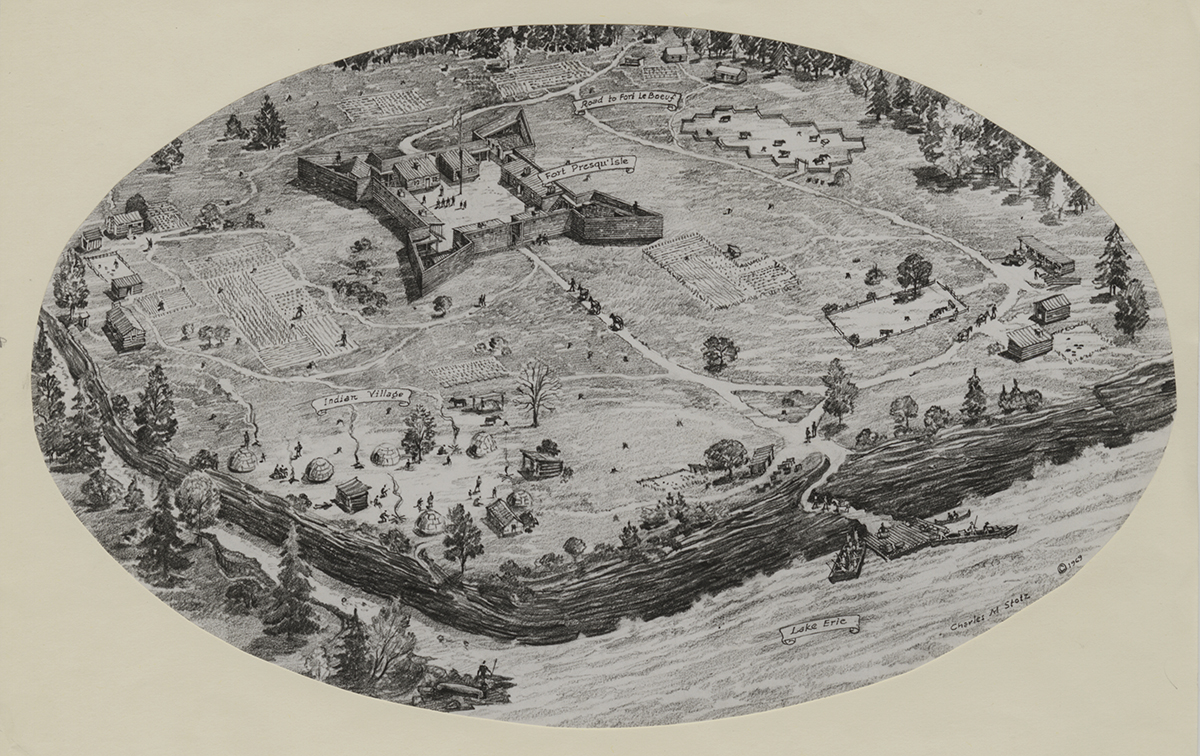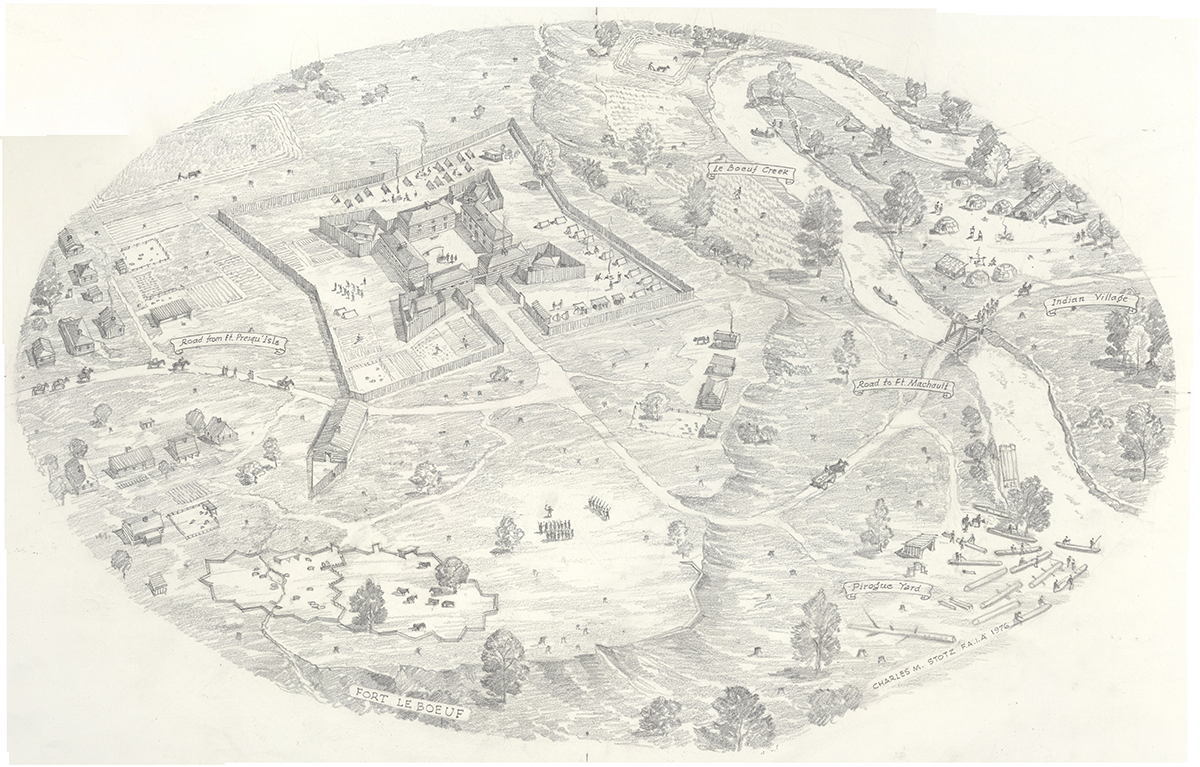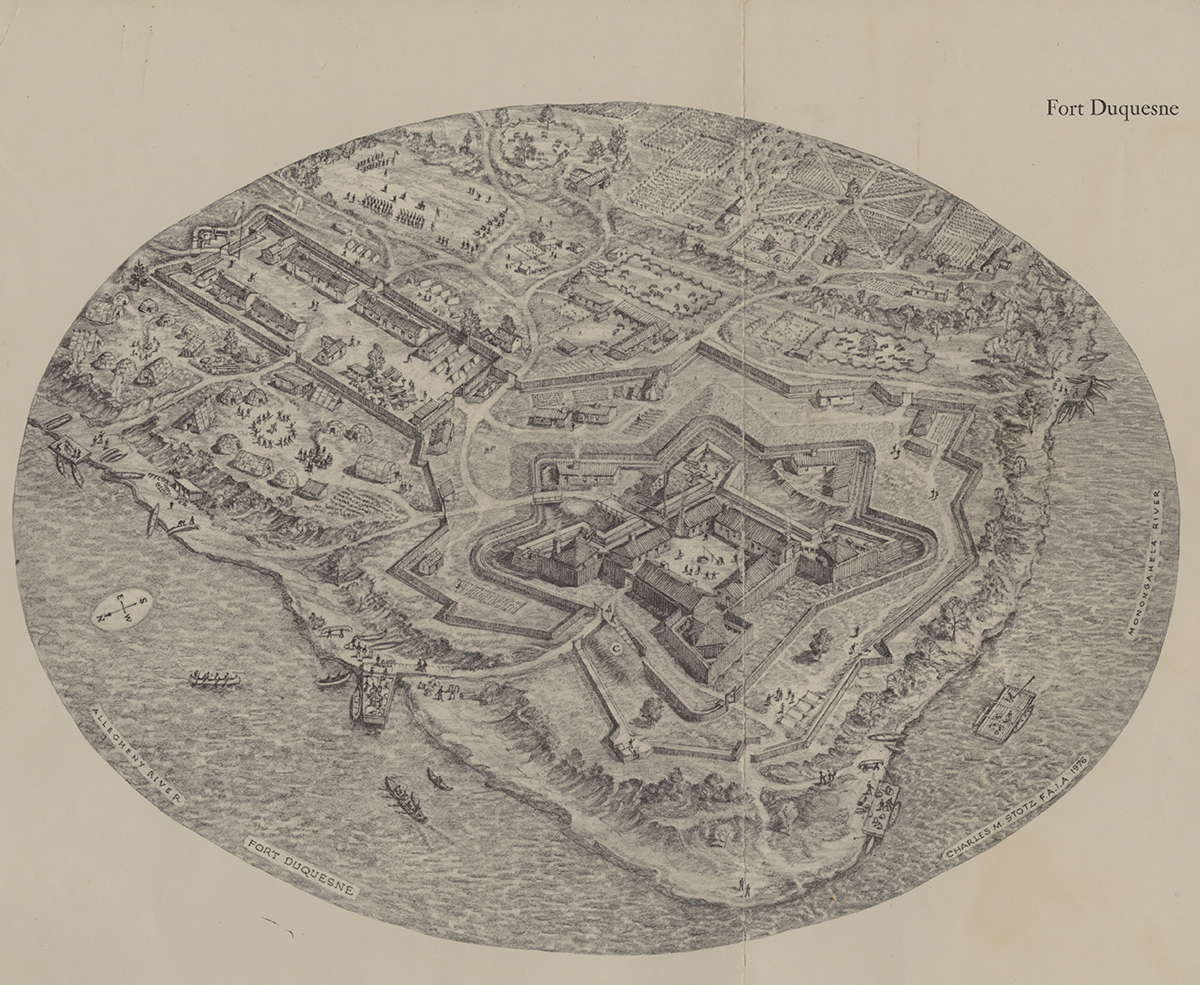In the 1740s, French officials in Canada were concerned over British encroachment into the Ohio Country, which they claimed to be part of New France. In 1749, the French sent Joseph Céloron de Blainville with 230 soldiers to reestablish alliances with Indian leaders and proclaim French sovereignty by burying lead plates at the confluences of major rivers. In October 1752, the new governor general of Canada, Ange Duquesne de Menneville, Marquis Duquesne, planned to fortify key locations on Céloron’s route from Lake Erie to the Forks of the Ohio and create a permanent French presence.

The French built four forts: Presque Isle, Le Boeuf, Machault, and Duquesne. All four shared a similar design: a rectangle 75 feet by 105 feet with a bastion at each corner. Construction on the first fort began on May 15, 1753 in present day Erie, Pa. Fort Presque Isle stood on a hill overlooking Presque Isle Bay and Lake Erie and was the first stop on the supply chain from Fort Niagara to the north. It had horizontal log walls that were one log in thickness and 12 feet high, supported by the side walls of cabins and the bastion firing platforms.

Construction on the second fort, Le Boeuf, in present day Waterford, Pa., began on July 11, 1753. Maj. George Washington visited the fort that December to deliver a message to the French requesting their departure from the Ohio Country.
During his visit, Washington recorded observations of the fort in his journal:
Four Houses compose the Sides. The Bastions are made of Piles driven into the Ground, standing more than 12 Feet above it, and sharp at Top: With Port-Holes cut for Cannon, and Loop-Holes for the small Arms to fire through. There are eight 6 lb. Pieces mounted, in each Bastion; and one Piece of four Pound before the Gate. In the Bastions are a Guard House, Chapel, Doctor’s Lodging, and the Commander’s private Store…There are several Barracks without the Fort, for the Soldiers Dwelling; covered, some with Bark, and some with Boards, made chiefly of Loggs. There are also several other Houses, such as Stables, Smiths Shop, &c.
Construction on Fort Machault, the third fort, located in modern day Franklin, Pa., began in August 1753, but work was delayed to make progress on the other forts. Machault was not completed until the late fall of 1757. All of the fort’s bastions and two curtain walls were constructed of picketed walls 13 feet high. The remaining two curtain walls were horizontal log construction. The four buildings inside were two stories high and had stone chimneys intended for supplies and officer use only. The fort also had a small sawmill in a nearby stream.

Fort Duquesne was the final link in the chain of French forts in the Ohio Country. Construction began in April 1754 after the French dismantled a small British trading post known as Fort Prince George, or Trent’s Fort, established that February. Fort Duquesne was a small square fort with bastions at each corner and two ravelins surrounded by a dry ditch. There were five buildings in the fort equal in height to the fort walls that were of both horizontal log and stockade construction (12 feet high). Additional structures, intended for defensive measures, were located in the bastions and ravelins of the fort. More buildings were located along the Allegheny River in a “second fort” for housing soldiers, interpreters, the surgeon, stores, and the hospital.
According to Marquis Duquesne’s successor Pierre François de Rigaud, Marquis de Vaudreuil, in 1757:
Fort Duquesne in its present condition could not resist the enemy. It is too small to lodge the garrison necessary for such a purpose. A single cannon shot would be sufficient to set it on fire, which could not be extinguished because the houses are too close together.
On Nov. 25, 1758, British Gen. John Forbes took the forks of the Ohio River, which the French evacuated prior to his arrival, and named the area “Pittsburgh.” The French abandoned the Ohio Country and their remaining forts in 1759 after the fall of Fort Niagara.
Sources
- Anderson, Fred. “The War That Made America: A Short History of the French and Indian War.” New York: Penguin Books, 2005.
- Stotz, Charles Morse. “Outposts of the War for Empire: The French and English in Western Pennsylvania: Their Armies, Their Forts, Their People, 1749-1764.” Pittsburgh: Historical Society of Western Pennsylvania and University of Pittsburgh Press, 2005.
- Washington, George. “The journal of Major George Washington: sent by the Hon. Robert Dinwiddie, esq; His Majesty’s lieutenant-governor, and commander in chief of Virginia, to the commandant of the French forces on Ohio; to which are added the Governor’s letter and a translation of the French officer’s answer; with a new map of the country as far as the Mississippi.” Williamsburg, 1754.
Kathleen McLean is the education manager at the Fort Pitt Museum.